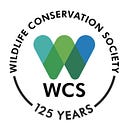ASIAN AND PACIFIC ISLAND HERITAGE MONTH 2021
A Wild Animal Curator Comes Home
By Donna Doherty | May 28, 2021
[Note: this story was originally published at PBS Nature.]
There is a saying that you can’t go home again, but five years ago I returned “home” to the Bronx Zoo. The Bronx Zoo was literally my backyard when I was growing up. My father was a curator there for 37 years.
Growing up, I loved going to work with him on weekends and getting the chance to ride around the zoo and see the animals. The Children’s Zoo-the old Children’s Zoo-was one of the places that I have memories of visiting as a little girl. Being able to pet and feed the goats and sheep was a usual stop during a visit. These visits helped to develop my appreciation for animals.
They say you can’t go home again, but five years ago I returned “home” to the Bronx Zoo.
When I was old enough, I started working at the Children’s Zoo on weekends and summer breaks while in school. In college, I struggled with what I wanted to do as a career. I wavered between working in a zoo and having a more traditional career. Taking the advice of my father of looking for a more “traditional” job, I majored in English in college.
As it came time to graduate and find a job, I decided that I wanted to continue to work with animals. I didn’t see myself spending my days in an office.
My pursuit of an animal keeper position led me across the country to the Fresno Chaffee Zoo. That was the best learning experience I could have for starting my career. At that time, Fresno was a small zoo with fewer than 20 keepers on staff. I spent much of my time there as a “relief” keeper, which moved me around to different areas of the zoo to cover routines.
This provided me the opportunity to work with a variety of animals-from hippos to Galapagos tortoises to flamingos. After a few years there, I became the provisional senior keeper with primates and carnivores. I learned to make friends with a chimpanzee who initiated new keepers through attempts to intimidate. I worked with leopards who intimidated me just by being around them.
In 1997, I heard that a new park was being built at Walt Disney World that would include live animals. I was able to get a job there and was able to watch the park transform from hills of dirt to the beautiful park it is today. As a keeper in the Veterinary Hospital, I had a chance to work with almost all of the animals in the park, including those hospitalized for medical care and new arrivals who needed to be quarantined (including a male mandrill I’d first met years before in Fresno).
Watching guests get up close with the animals and seeing them make a connection reinforced for me that what we did made a difference and that visitors were experiencing something they could never get from a book. I’ve been fortunate to have had many such encounters, both in zoos and in the wild. One of the most memorable was a visit to the Bwindi Impenetrable Forest in Uganda to see mountain gorillas. Seeing a gorilla family interacting in their natural habitat filled me with awe.
The Bronx Zoo is still the place where the children of New York are able to make connections with animals that they may never get the chance to see in the wild.
Such interactions have been at the center of my work throughout my career. In 2002, I was part of a group from Disney’s veterinary team that traveled to Guam. We worked with the Guam Department of Agriculture staff on the medical care of birds, and they showed us how they managed the Critically Endangered Guam rails for breeding and prepared them for reintroduction.
In 2010, a prolonged winter cold event in Florida resulted in a large number of sea turtles becoming debilitated due to the decrease in water temperatures. I was part of the team that cared for and rehabilitated some of the sea turtles and was able to participate in their release once they were healthy.
Another project involved monitoring wood storks at a Nature Conservancy park near Disney where the storks would nest and raise their young. Each season, we’d make a weekly canoe trip across the lake to the rookery and monitor the breeding cycle from nest building until the chicks fledged, recording the findings for the U.S. Fish and Wildlife Service (USFWS). Conservation advances during that period allowed USFWS to downgrade wood storks from a status of “Endangered” to “Threatened.”
After being away for 24 years, I’ve returned to the Bronx Zoo, where I am now a curator in the Mammal Department. The Bronx Zoo has changed in many ways, but it is still the place where the children of New York are able to make connections with animals that they may never get the chance to see in the wild. It is the place that inspired me to learn about and explore the planet that we live on, and hopefully, the zoo will continue to inspire the next generation of children.
Donna Doherty is Curator of Ungulates and Carnivores at the Wildlife Conservation Society’s Bronx Zoo.
Originally published at https://www.pbs.org on May 28, 2021.

